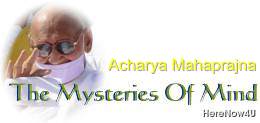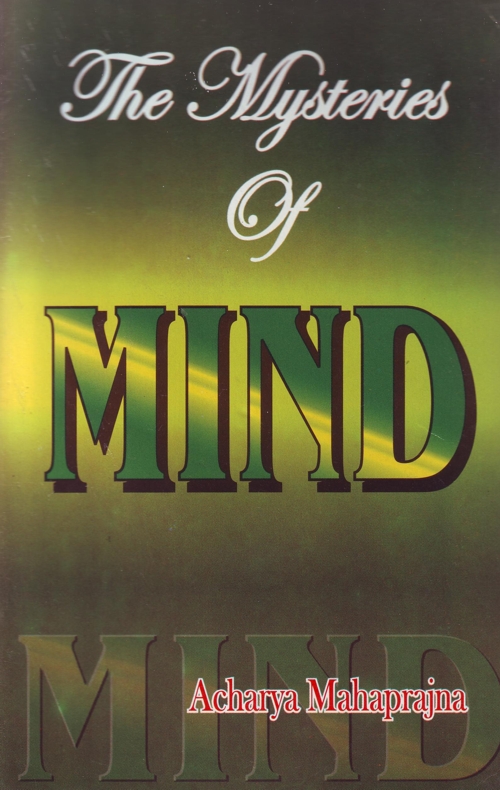
Those who take this journey as freshers will find it difficult. They might be beset with difficulties. They might naturally ask whether there are two souls, one, which perceives and the other, which is the object of perception. When we say, "See the soul," does it not mean that the soul, which is the object of perception, is different from the soul, which perceives it? This question is quite natural. It is the nature of man to divide. There are divisions in the field of business, and commerce, in religion and in politics. The tendency to divide brought about a division in the spiritual world also. We cannot but see the soul divided. We are dualists. This dualism troubles and confuses us only until we have begun our spiritual pilgrimage. It will disappear once we have started on our journey. Once we have completed the journey, it will disappear once for all.
We usually look at what is outside us. We have become so much enamoured of things outside us that even the soul has become an extrovert. It has assumed an outward form with the result that our entire attitude has become inclined towards the world outside us. The soul, which had hither-to remained within us, has begun to identify itself with the world outside it. It has begun to superimpose itself on the world of objects other than itself.
Logicians tell us that if we want to see a lamp, we do not need another lamp. In order to see a shining object we do not need another shining object. Light is self-revealing. It would be stupid of us if we burnt a lamp to see the sun. The soul, which shines like the sun, needs no material medium to be seen. Our difficulty is that there is a curtain between the inner soul and the supreme soul and between both of these and the outer soul or the reflection of both on the outer world. We have to tear it asunder. It consists of the passions of delusion, which clouds perception of knowledge and of antaraya (obstructing karma). It is very difficult to remove this curtain and see the Supreme. There is a huge distance between the soul tending outwards and the Supreme. The space between the two is filled with fantastic obstructions and it is a Herculian task to remove them. These obstructions are not material obstructions, which can be seen by the eye. They are highly refined and subtle and it is very difficult even to feel their existence. We have no means of perceiving the subtle. That is why we are not fully aware of it.
When we are called upon to perceive subtle entities, we become overwhelmed with the long path we have to traverse in the course of our spiritual pilgrimage. But let us not be disheartened. Let us proceed. By and by we will realize that we are coming nearer and nearer to our goal. We should persevere in our attempts with hope and enthusiasm. Anyhow, we need a light to illumine our path. This light is the light of pure consciousness. It will not allow passions and likes and dislikes to interfere with us. We will be able to live through moments in which attachments and aversions do not disturb us so that we may freely walk on the path illuminated by the light of pure consciousness. Let us have patience and confidence in ourselves. With the help of this light we will be able to see that supreme light which never flickers and is never extinguished.
Readiness to undertake spiritual exertion is the greatest religious achievement. If religion does not inspire us to exert ourselves, it is a hoax, an illusion and an opiate. Unfortunately religious people in the modern world do not pay any attention to the need for spiritual exertion. They do preach spiritual and moral values like goodness, selflessness and altruism, honesty, morality, purity of conduct, friendliness, non-violence, abstinence from theft, etc. These values are no doubt beneficial. But in spite of these sermons human beings have not changed much. They have remained what they were. The sermons have failed to reconstitute the human personality. They have remained words empty of meaning.
A rat and an owl were friends. The rat complained to its friend that a cat had become a menace to it and it did not know how to get rid of the menace. The owl suggested that the rat should become a wild cat to frighten away the cat. The rat became very happy to hear this but it did not know how to become a wild cat and asked its friend to tell it how it could become one. The owl replied, "Do not expect me to do everything for you. I have suggested the way out of your difficulty. That is all I can do for you. It is your job to become a wild cat." Something like this is also happening in the field of religion. Preachers often tell us light-heartedly to do this and to avoid that. It is dejecting to see that they do not suggest the practical means of becoming what they want us to become. The truth is that they simply mislead us. Unless religion tells us the methodology of transforming ourselves into good and ideal beings, we are bound to lose faith in it and to eschew it. That is the reason why people have become atheists and disdain religion. They find preachers preaching all sorts of irresponsible things without the strength of conviction. This situation is a great challenge to those who profess religion much more to those who want to make it popular and convincing. It is expected of religion that it should provide us with a clear-cut plan and method of practice to enable us to transform ourselves in a scientific way. We have to be convinced that religious practice is capable of making us happy, comfortable and peaceful. The challenge to religion can be successfully met in this way only.
Thirty years ago Acarya Tulsi made a significant observation: "Thousands of people throng to see and meet us. They come to us from far-off places. They venerate us and feel that there is something in us which can give them peace and self-confidence. Shall we not fail in our duty if we did not give them something positive? We will be simply exploiting them if we did not give them any returns of the veneration they show to us." The acarya was very serious when he made this observation. The result was the launching of the anuvrata movement. This movement aimed at bringing about a spiritual transformation in the entire religious order of which he happens to be the acarya.
The main question to be considered is how to transform life and how to give it a turn towards self-realization. The greatest step in this direction is to allow the soul to perceive itself. There can be no transformation of personality until we started looking within.
In this connection I would like to refer to a book entitled 'Glands: The Invisible Guardians’ by Dr. Kapp. The author is not a spiritualist but a physiologist. He says that the glands of our body become deformed by anger, quarrelsomeness, jealousy, fear, attachment, repulsion, etc. These passions force the adrenal gland to do extra work due to which it becomes exhausted. The same thing happens to other glands also. Work produces exhaustion. If you overload a cart, the bullocks, which pull it, become strained and exhausted. This happens to machines also. If they are strained, they break down. When our feelings and predilections become overactive, they put additional pressure on the glands as a result of which they begin to function abnormally. Their energy decreases resulting in physical imbalance. That is why it is desirable to restrain our passions and impulses. This has to be done in an intelligent way. Religious practice is a method of achieving this end.
We need a religion, which is not based on fear. Bhagavana Mahavira exhorted us to shed fear. That is the starting point of the religion he advocated. Ahimsa (non-injury), truth, non-covetous-ness etc. are subsidiary things. The central thing is freedom from fear. Mahavira exhorted us not to be afraid of old age, death and enemies.' Fear produces various deformities. The adrenal gland is the most affected by fear.
 Acharya Mahaprajna
Acharya Mahaprajna

